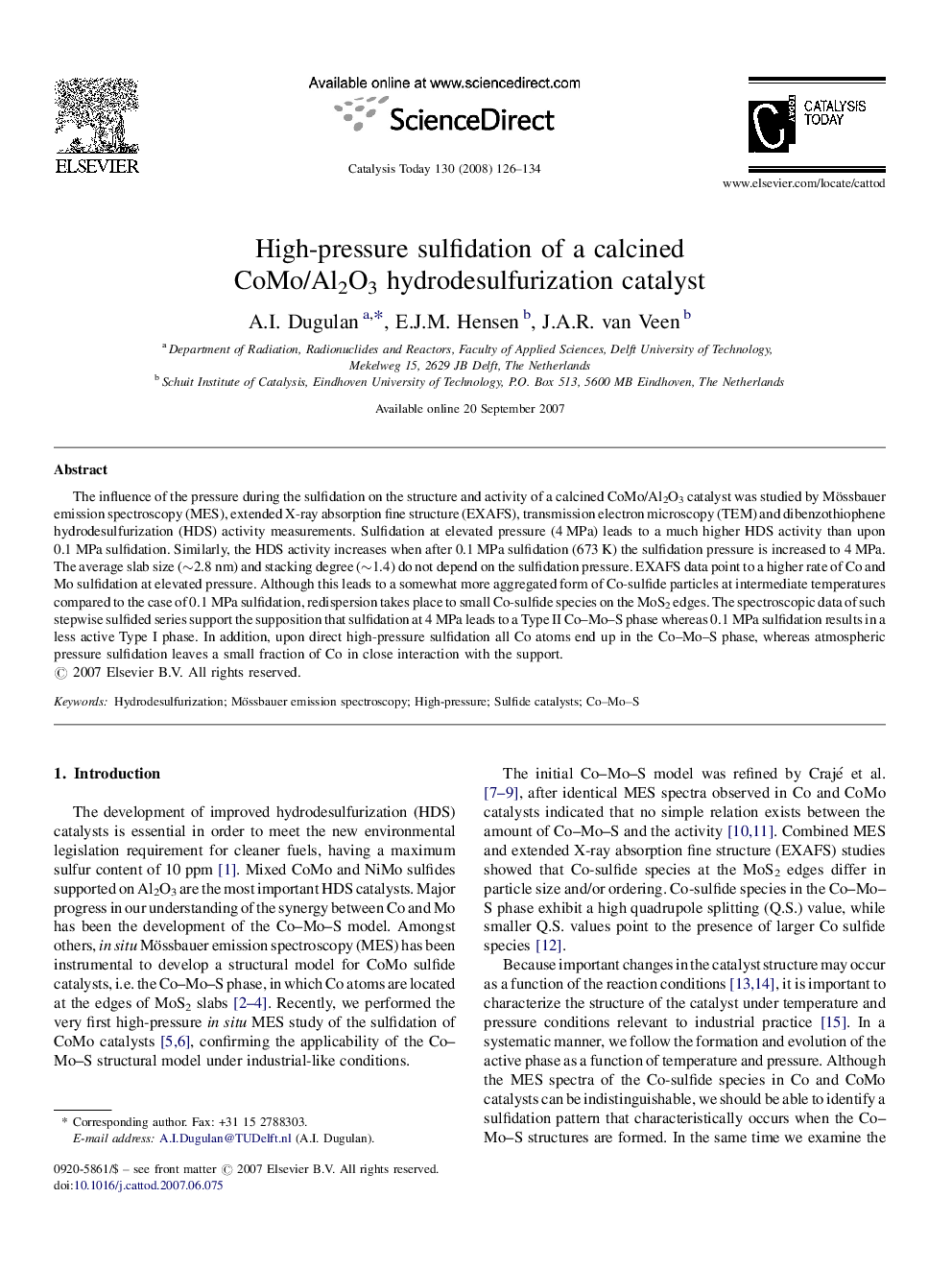| کد مقاله | کد نشریه | سال انتشار | مقاله انگلیسی | نسخه تمام متن |
|---|---|---|---|---|
| 57860 | 47133 | 2008 | 9 صفحه PDF | دانلود رایگان |

The influence of the pressure during the sulfidation on the structure and activity of a calcined CoMo/Al2O3 catalyst was studied by Mössbauer emission spectroscopy (MES), extended X-ray absorption fine structure (EXAFS), transmission electron microscopy (TEM) and dibenzothiophene hydrodesulfurization (HDS) activity measurements. Sulfidation at elevated pressure (4 MPa) leads to a much higher HDS activity than upon 0.1 MPa sulfidation. Similarly, the HDS activity increases when after 0.1 MPa sulfidation (673 K) the sulfidation pressure is increased to 4 MPa. The average slab size (∼2.8 nm) and stacking degree (∼1.4) do not depend on the sulfidation pressure. EXAFS data point to a higher rate of Co and Mo sulfidation at elevated pressure. Although this leads to a somewhat more aggregated form of Co-sulfide particles at intermediate temperatures compared to the case of 0.1 MPa sulfidation, redispersion takes place to small Co-sulfide species on the MoS2 edges. The spectroscopic data of such stepwise sulfided series support the supposition that sulfidation at 4 MPa leads to a Type II Co–Mo–S phase whereas 0.1 MPa sulfidation results in a less active Type I phase. In addition, upon direct high-pressure sulfidation all Co atoms end up in the Co–Mo–S phase, whereas atmospheric pressure sulfidation leaves a small fraction of Co in close interaction with the support.
Journal: Catalysis Today - Volume 130, Issue 1, 15 January 2008, Pages 126–134